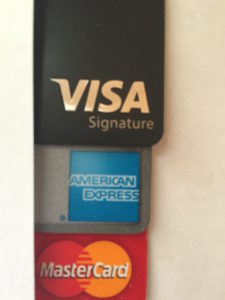I recently returned from an amazing European vacation. 2 weeks enjoying Italy and Germany. I had been saving up all my credit card, airline miles and hotel points and cashed a lot of them in. Both of our flights were free as were 3 of our 4 hotels/airBnBs. However, this isn’t necessarily a post about earning points (you can read about that here), this is more a post about exchange rates. The entire world doesn’t operate off of one currency, and leaving your home country often means changing money. It can certainly be confusing and tricky, and unfortunately a lot of people just throw their hands up and exchange their money at the first place they find. Doing so can cost you a lot in hidden fees and crappy exchange rates, so I thought I’d do a post helping you not get screwed on foreign exchange!
First of all, what does an exchange rate mean?
Each country (or the European Union (adios UK)) has their own currency. Travelling to China forces you to spend in yuan, Japan yen, Mexico pesos and Canada candadian dollars. Each country maintains their own currency and all their citizens conduct business in it. There are two types of exchange rates to consider; the fixed rate and the floating exchange rate. A fixed rate is a country that pegs its currency against another currency, often the US dollar. The country of Belize for example pegs its currency; the Belizean dollar is $2 BZD to $1 USD. Hong Kong also has a fixed exchange rate; $1 USD will get you $7.76 HKD. These exchange rates don’t change, and $1 USD will get you more or less the same thing today or a year from now. The opposite is a floating exchange rate. This is what most countries have. Take the Euro for example; in 2014, $1 USD got you around €0.70, but as of late in 2016, $1 USD will get you €0.90. Pretty sweet if you’re travelling in 2016 compared to 2014. A €100 hotel would have cost you $142 back in 2014, but now it only costs you $111. However, please don’t take this as advice to go out and buy currency, trading currency is risky and not YMF advisable. The exchange rate can fluctuate on any number of complex issues beyond that average investor’s knowledge base.
Got it, so how does one exchange money?
Because currency exchange is a known, fair value trade, you can always find out how much 1 unit of your local currency is worth compared to another currency. A quick Google search will tell you the exchange rate. Unfortunately, people that trade money are often in the business of doing so (unless you had a friend that had recently returned with leftover currency), and they’ve got to make money in this trade. That’s why they’ll always give you a little less than what it’s really worth, keeping a little profit from themselves. This profit is called a spread. The bigger the spread, the more money they’ll make. There are 3 main ways to convert currency, and I’ll arrange them in terms of most favorable to you to least favorable.
Most favorable: Credit cards
Most good travel credit cards these days come without an international transaction fee. This is an incredible feature. Credit cards used to charge a couple of bucks for each transaction, not it’s free. Whether you’re buying gelato in Italy, noodles in China or a margarita in Mexico, you’ll be able to do so without a foreign transaction fee, and your credit card company will often give you a quite good exchange rate transferring your currency. You don’t have to worry about carrying cash and can rest easy knowing you’ve changed your money at a fair rate.
Moderately favorable: Getting money here at home
I actually didn’t do this the last time I left the US to go abroad, and am a little bummed by it. You can actually notify your bank (with a little notice ahead of time) and request currency from your destination. Of course, be sure to check the exchange rate to make sure you’re getting a decent rate. Pros here are is that it’s a bit safer (not using an ATM in a foreign country or carrying around a ton of home currency looking for a place to change it) but downsides of course could be any fees or a bad exchange rate. But, you can easily avoid a fee/crappy exchange rate by looking in advance.
Eh favorable: Money out of an ATM
This is the method that I took, along with using credit cards. But, as I found, not everywhere took credit cards or they would have a minimum purchase that my €2 gelato purchase didn’t qualify for. It’s also my opinion that it’s good to keep some cash with you when travelling. As crazy as it is, most ATMs will accept your home debit card (use debit not credit) and will allow you to pull money out of your checking/savings (do checking though) in the local currency. There will be a couple of fees included with this, maybe $10-$15 dollars, so try to get out a larger amount each time. It also doesn’t hurt to check with your bank to see if they have ATM partnerships abroad. My bank, Bank of America for example, has a partnership with an Italian bank, BNL, and I was able to save $10 per transaction by using them. Not bad! The exchange rate out of ATMs is typically pretty favorable as well, so you’re just paying a couple of dollar for the convenience.
Least favorable: Changing currency in country at a moneychanger
There are typically plenty of moneychangers, both in your home country, the airport and at your destination country. They’ll be more than happy to change your money into the local currency for you. As previously mentioned, these people have to make a living, and they do so both by charging crappy exchange rates and typically fees. For example, before leaving Atlanta for Europe, I changed some USD into Euros at the airport (rookie mistake). I not only got crappy exchange rate (.70 compared to the actual rate of .88) but also got hit with a $9.99 transaction fee! Outrageous! The best way to survive moneychangers if it comes down to it is to shop around. Browse a couple of moneychangers and see both the exchange rate they offer as well as any fees they change. Don’t be afraid to ask and then walk away. I was actually able to find in Italy a moneychanger that offered both a fair rate and no commission fees. His shop was a bit out of the way and was nothing more than a hole in the wall but hey; it worked for me!
Hopefully you’ve got a better sense of what an exchange rate is and how it works. Probably the biggest misconception about an exchange rate is to accept what you see at face value. Although an exchange rate is a well-known value and can easily be calculated, don’t think that the rate you see on the board of a money is the real one!

 Personal Finances are certainly top of mind for many of us. If you're looking to get serious about improving your financial situation, we've got lots of great materials all over this site! Additionally, we realize that there's a lot of noise out there, and so we created PERSONAL FINANCIAL GUIDES focused on topics with all the info you need, and without any of the noise/ads/clickbait.
Personal Finances are certainly top of mind for many of us. If you're looking to get serious about improving your financial situation, we've got lots of great materials all over this site! Additionally, we realize that there's a lot of noise out there, and so we created PERSONAL FINANCIAL GUIDES focused on topics with all the info you need, and without any of the noise/ads/clickbait.